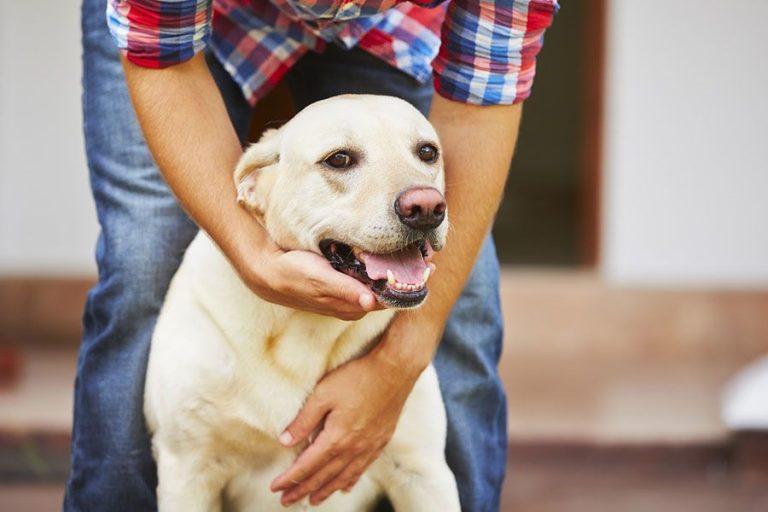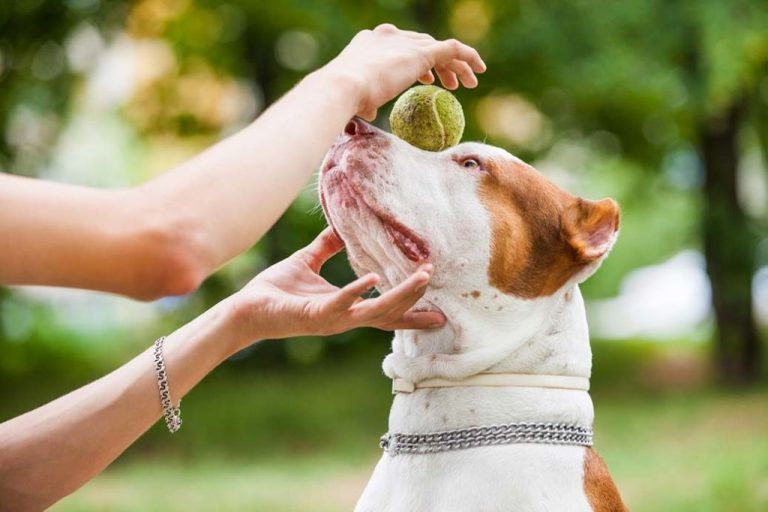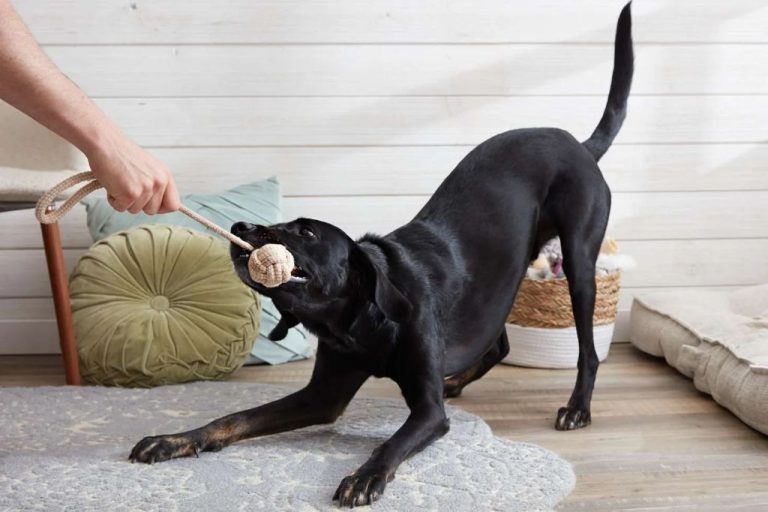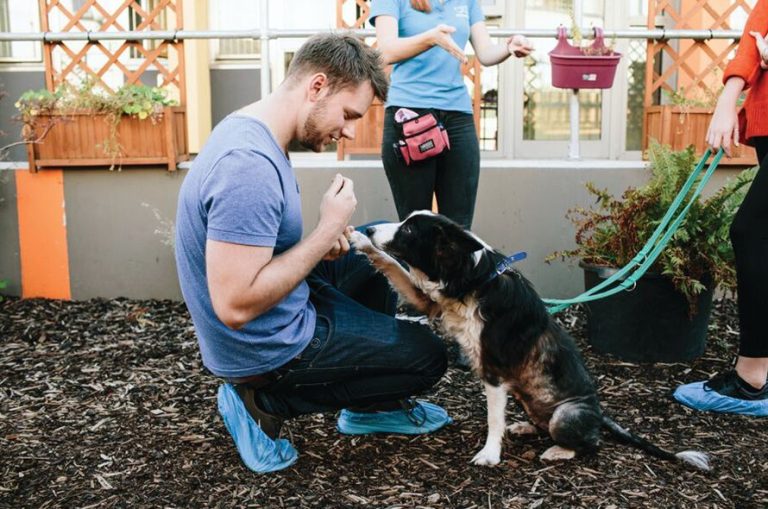Teaching Your Dog To Stop Jumping On People
Why Dogs Jump
Dogs often jump up on people as a way to say hello and show excitement or affection (https://www.rover.com/blog/why-do-dogs-jump-on-you/). This greeting behavior is a natural canine instinct, since dogs normally greet each other face-to-face (https://www.akc.org/expert-advice/training/how-to-stop-your-dog-from-jumping-up-on-people/). Jumping is an appeasement behavior and a request for attention. Other reasons dogs jump include:
– Seeking More Attention: Dogs who don’t get enough exercise or playtime with their owners often jump to get any attention, even if it’s negative attention. They want your focus and interaction.
– Lack of Training: Dogs with no training may enthusiastically jump up to greet everyone because they were never taught not to. They don’t know it’s unwanted behavior.
– Boredom: Dogs left alone for long periods get overly excited when company arrives and may jump. Providing adequate exercise and stimulation helps reduce boredom and excitability.
– Territorial Behavior: Some dogs jump to protect their territory. Careful socialization and obedience training can help curb this cause.
Risks of Jumping
Allowing a dog to jump up on people can pose several risks. The most obvious is the dog knocking people over, especially children, elderly individuals, or those with disabilities or medical conditions (VCA Hospitals). Even a medium or small dog can generate enough force when jumping to knock an unsteady person off balance. This can potentially lead to injuries from falls.
Dogs that jump up also often scratch people in the process, either with their paws or nails. These scratches can be minor but painful, or occasionally deeper and more severe if the dog’s nails are not properly trimmed. Scratches carry a risk of infection as well.
Jumping dogs can also dirty or ruin clothing when their paws come in contact. This is frustrating for visitors or strangers encountering the dog. Additionally, some people may be fearful around dogs, and a jumping dog can startle or scare these individuals.
For all these reasons, it’s important to train dogs not to jump on people, especially before welcoming guests into your home.
Training Overview
It’s important to start training your dog not to jump from a young age (https://www.akc.org/expert-advice/training/how-to-stop-your-dog-from-jumping-up-on-people/). The most effective way to train a dog is through positive reinforcement. When your dog has all four paws on the floor, reward them with treats and praise. This reinforces the behavior you want. Be patient and consistent with the training. Dogs don’t learn overnight, it takes regular practice and reinforcement for them to understand what’s expected of them. With persistence and positivity, you can curb your dog’s jumping habit.
Ignore the Behavior
One of the most effective ways to discourage jumping is to simply ignore the behavior completely (AKC). When your dog jumps up, immediately fold your arms, turn away, and avoid eye contact. By denying your dog the attention they want, you are showing that jumping results in the opposite of their desired reward.
It’s important not to interact with your dog at all when they have all four paws on the floor, and then lavish them with attention and praise once they calm down. By consistently removing attention when they jump, and providing affection as soon as they stop, most dogs will quickly make the connection.
This technique requires every human your dog comes into contact with to participate by folding their arms, turning away, and withholding attention when jumped on (Human Society). It also requires patience and persistence, but it has proven effective for dogs who jump to gain attention.
Reward Four on the Floor
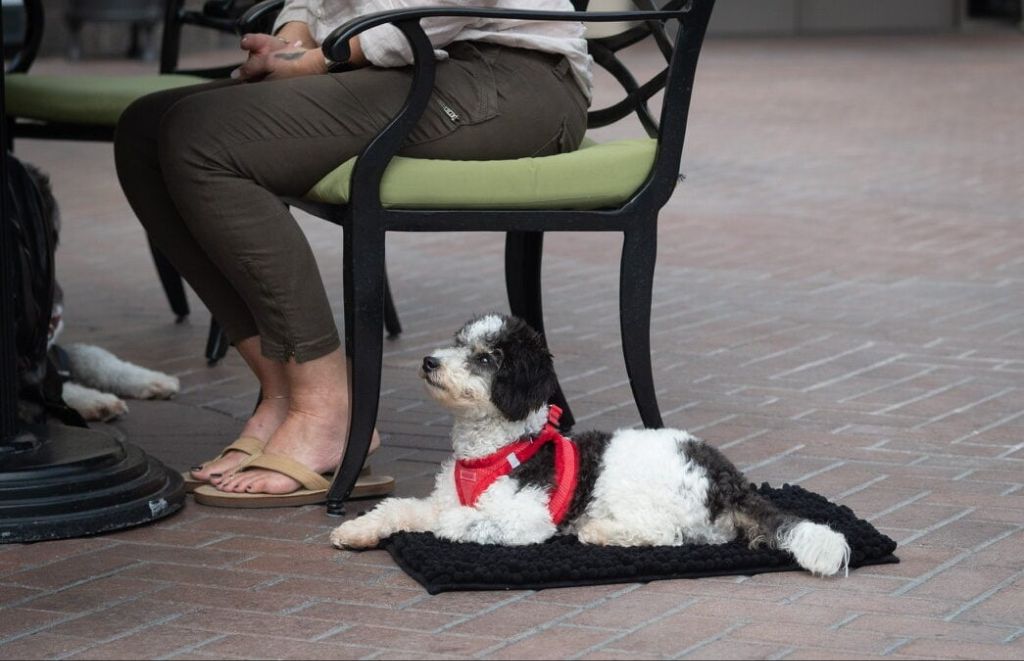
One of the most effective ways to stop jumping is to reward your dog for having all four paws on the floor. This trains them that keeping four paws down results in attention, treats, and praise. Known as the “four on the floor” method, here’s how to do it:
When greeting your dog, wait until they have calmed down and have all four paws on the ground. As soon as their paws are down, immediately say “good four on the floor!” in an upbeat, happy voice. Give them a treat and loving pets to reinforce the behavior.
Practice this during every interaction with your dog. Ask people who visit to also reward your dog for four on the floor greetings. With consistency, your dog will learn that the only way to get attention is when all four paws are planted. For more on this method, check out 4 On the Floor Dog Training.
Use Verbal Cues
Verbal cues are very useful for curbing jumping behavior when used consistently. Two important verbal cues to teach your dog are ‘Off’ and ‘Sit’.
The ‘Off’ command tells your dog to stop jumping up. Say ‘Off’ in a firm, authoritative voice when your dog jumps, then immediately turn and step away to reinforce that jumping leads to no attention. Praise and reward your dog once all four paws are on the floor. Be patient and persistent, as it may take many repetitions for your dog to generalize this cue.
The ‘Sit’ cue is useful for redirecting to a positive behavior instead of jumping. When you anticipate your dog may jump, ask for a ‘Sit’ first before petting or giving attention. Reward with praise and a treat when your dog sits. This builds the habit of sitting politely instead of jumping up in exciting situations. According to dog training experts, “There is a current trend in agility to train your dog to respond to a verbal cue for behaviors such as wrapping a wing of a jump…” (Source).
Leash Corrections
One effective technique to stop jumping is to give a light leash tug or snap down when your dog jumps up. This creates an unpleasant sensation that helps deter the behavior. As soon as your dog’s feet are back on the floor, release the tension on the leash and praise them for having all four paws on the ground. If they try to jump up again, repeat the gentle leash correction. It’s important not to yank or be harsh with the leash correction. The goal is to get your dog’s attention and interrupt the jumping habit, not punish them. As recommended by Stopping Jumping, hold the leash short but with some slack when your dog tries to jump. Time the correction to coincide exactly with the jump.
After applying the leash correction, immediately release the leash when your dog sits or has four paws on the floor again. Then provide praise and a treat. This reinforces the desired behavior of sitting calmly rather than jumping up. With repeated consistency, your dog will learn that sitting results in rewards while jumping leads to the unpleasant leash tug. Always use a harness or flat collar rather than a slip collar for leash corrections to avoid injuring your dog’s neck.
Manage the Environment
One of the most effective ways to stop your dog from jumping is to manage their environment and limit their access to situations that trigger the behavior. As the Tails of Connection article notes, “Management is the fastest way to train your dog to stop jumping.” Here are some tips for managing your dog’s environment:
– Limit access to entrance areas. Use baby gates or close doors to keep your dog away from areas where guests enter your home. This prevents them from jumping on guests as they walk in.
– Keep your dog calm before guests arrive. Take them for a long walk or provide enrichment toys to settle them down. A calm dog is less likely to get over-excited and jump.
With some strategic management, you can limit the opportunities your dog has to practice unwanted jumping. This will accelerate your training progress.
Be Consistent
One of the most important things when training your dog to stop jumping is being consistent. All family members need to use the same training techniques, commands, and consequences every time the dog jumps up. Dogs do not generalize well, so they may learn not to jump on one person but continue jumping on others unless the training is consistent.
Continue training in all situations, not just at home. Practice greeting people on walks, at friends’ houses, at the park, and anywhere else you may encounter people. You want your dog to learn that the rule is always the same: four paws on the floor, not jumping up! According to the Konos article, consistency helps a dog feel calmer and more secure when they know what to expect.
Be Patient
Teaching your dog not to jump on people takes time and patience. Changing this behavior could take weeks or even months of consistent training (How to stop your dog from jumping up). Don’t expect overnight results. Stick with the training plan and celebrate small wins and milestones along the way like the first time your dog sits instead of jumping in an exciting situation. Keep sessions positive and end on a good note so your dog continues to associate the training with rewards rather than frustration.


